What's New in Unicode 13.0
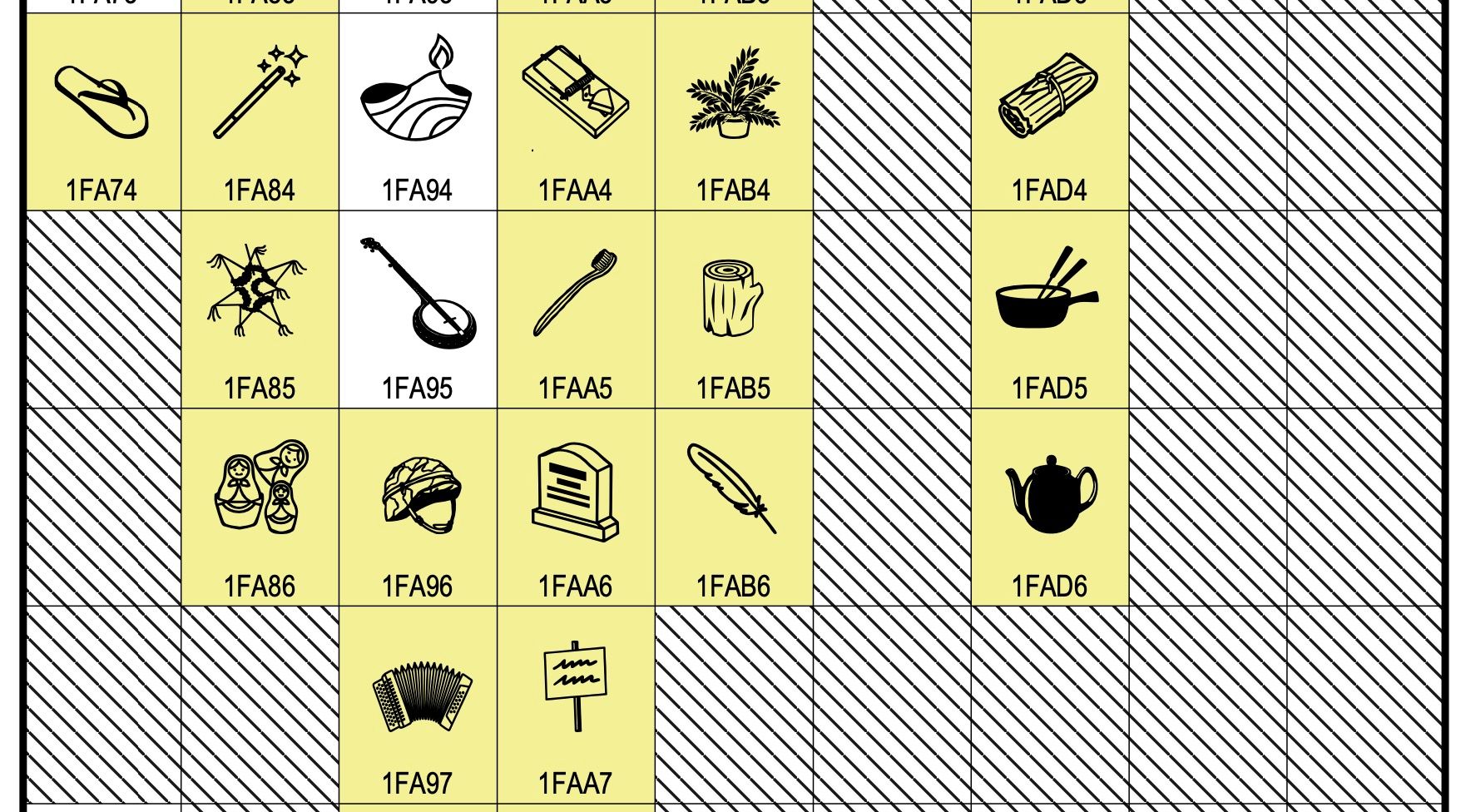
The Unicode Consortium has today released version 13 of the Unicode Standard. The release includes 55 new emoji characters and 5,875 non-emoji characters.
This follows last month's announcement of the final list of 117 new emojis for 2020, and paves the way for new emoji support to be added to major platforms throughout the year.
Emoji updates
A total of 55 new emoji code points are new in this release and include additions such as Smiling Face with Tear, People Hugging, Bubble Tea and Ninja.
These new characters can be seen in the relevant Unicode charts published on March 10, 2020:
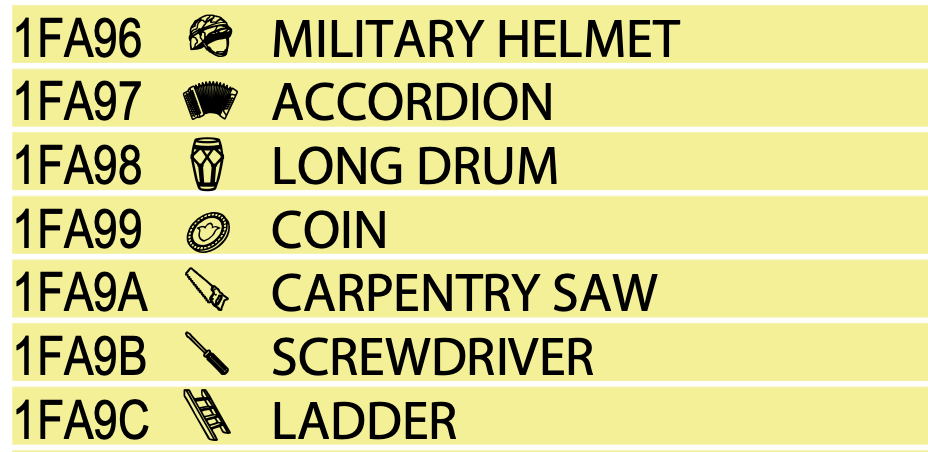
The documentation for the Unicode Standard only provides glyphs in black and white, and by their nature, the color emoji implementations will vary from these designs.
New entries are shown in yellow and other additions include a plunger, fly, anatomical heart and blueberries.
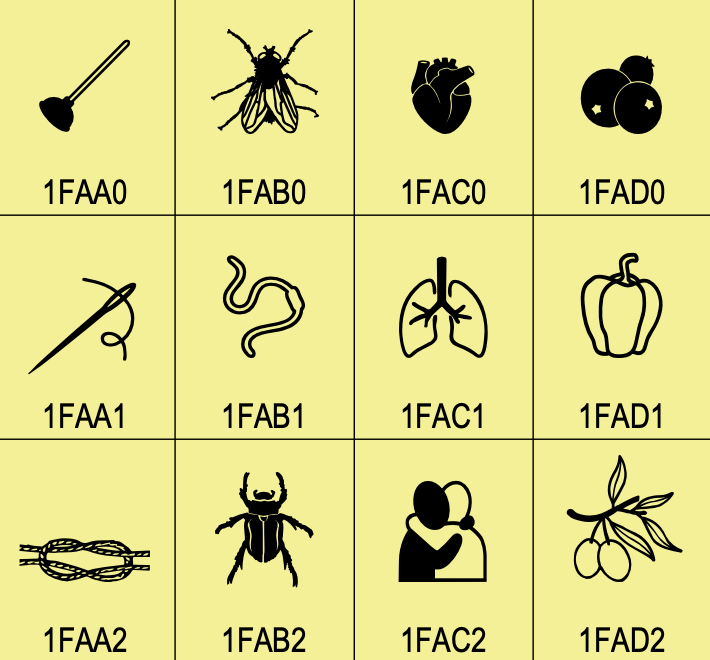
The remaining 62 emojis (of the 117 announced) are sequences which combine multiple code points to display as a single emoji.
The distinction between a Unicode 13.0 and Emoji 13.0 is that latter includes sequences for gender, skin tone, and ZWJ Sequences where two emojis combine to make a single emoji, such as Polar Bear which is a combination of 🐻 Bear Face and ❄️ Snowflake.
Similarly, a new code point 🤌 U+1F90C PINCHED FINGERS has been added in Unicode 13.0, but the sequences for skin tone don't require unique code points, and are only found in Emoji 13.0.
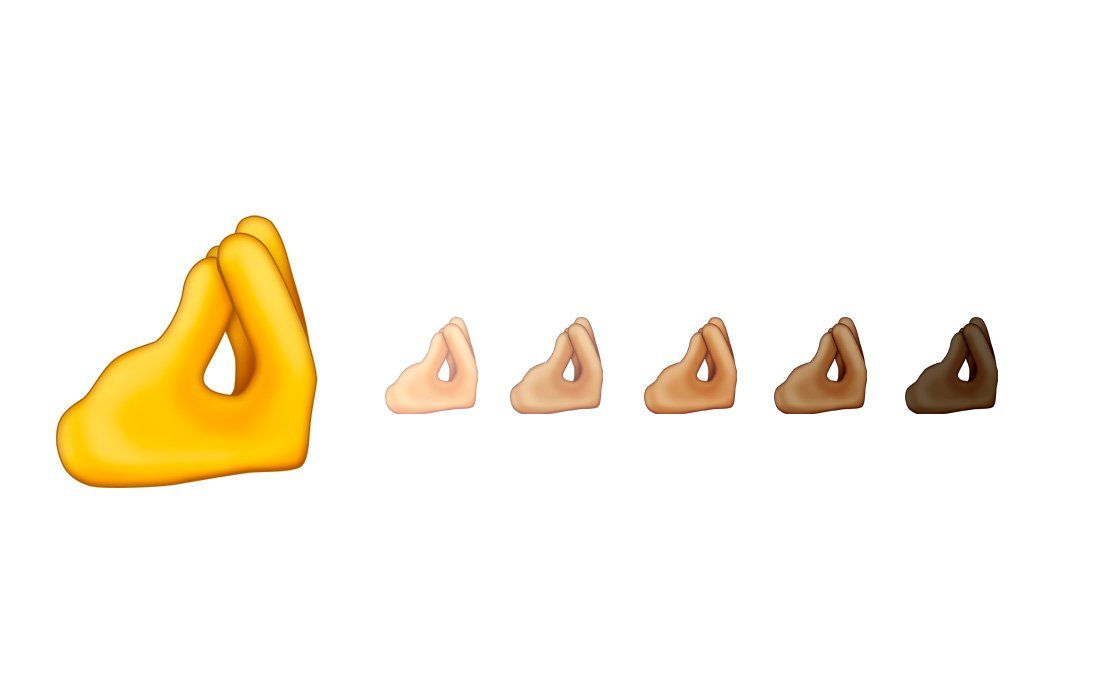
Other sequences in Emoji 13.0 include:
- Black Cat: a combination of 🐈 Cat and ⬛ Black Large Square
- Transgender Flag: a combination of 🏳️ White Flag and ⚧️ Transgender Symbol
- Person Feeding Baby: a combination of 🧑 Person (or 👩 Woman or 👨 Man) and 🍼 Baby Bottle
These emoji sequences are not part of today's Unicode announcement, but will still arrive on major platforms at the same time as the emojis listed in Unicode 13.0.
Non-Emoji Updates
The majority of Unicode characters are not emojis, nor were emoji characters even part of the Unicode Standard until they were added for Japanese carrier compatibility in 2010.
Emoji updates are given priority here at Emojipedia, but its worth taking a moment to look at some of the other new characters approved in 2020.
Regarding this release, the Unicode Consortium notes:
“Unicode 13.0 adds 5,930 characters, for a total of 143,859 characters. These additions include 4 new scripts, for a total of 154 scripts, as well as 55 new emoji characters.”
To put it in perspective, the total number of emojis listed as RGI (Recommended for General Interchange) is 3,304, compared to over 143,859 characters now in the Unicode Standard.
Keep in mind that not every emoji has a unique Unicode code point, and not every Unicode character is an emoji. Here's how that relationship looks as of March 2020:
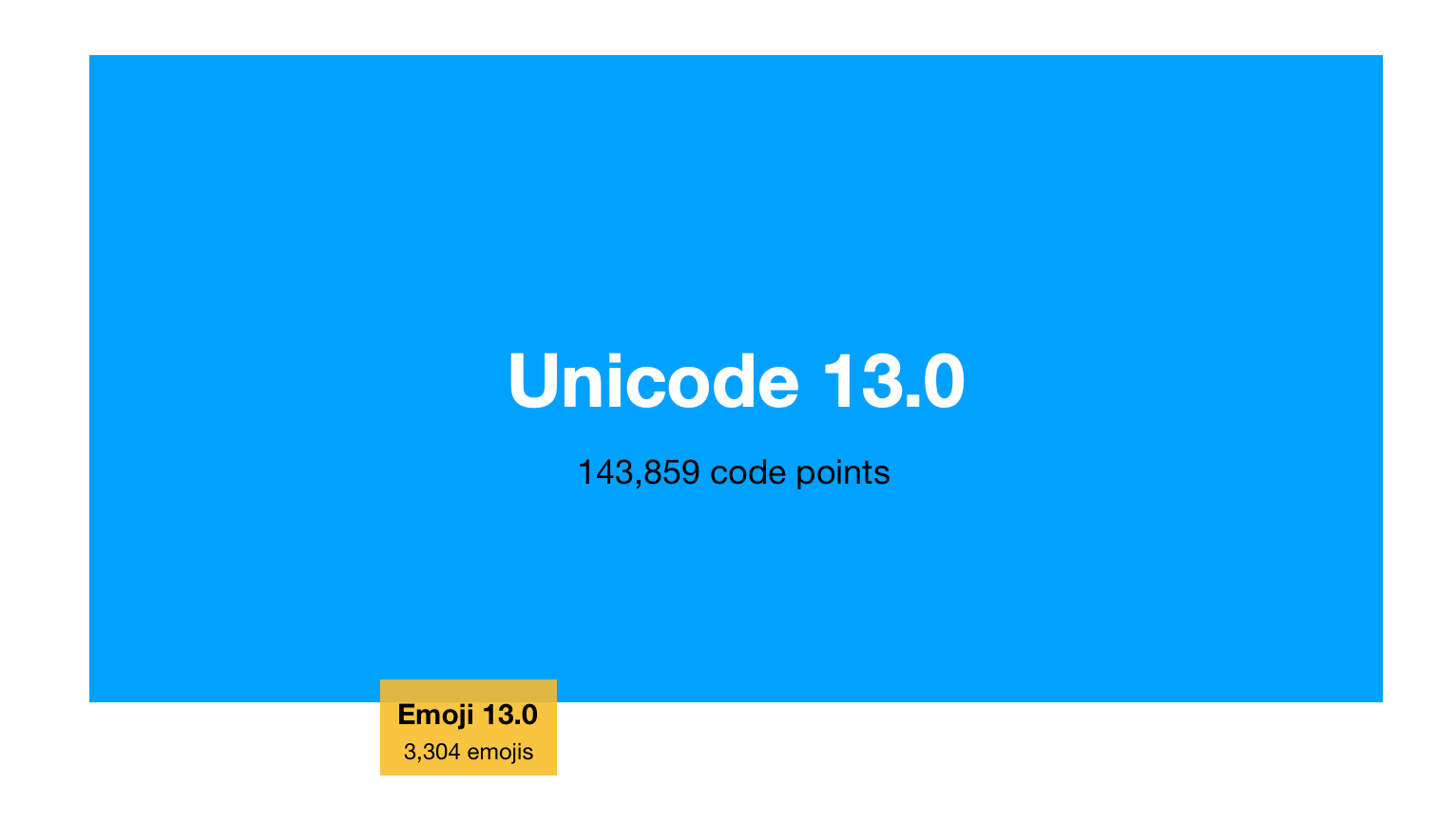
Symbols added in this release (which aren't implemented as emojis) include a Creative Commons symbol, as well as other related glyphs for non-commercial licences, or to indicate where attribution is required.
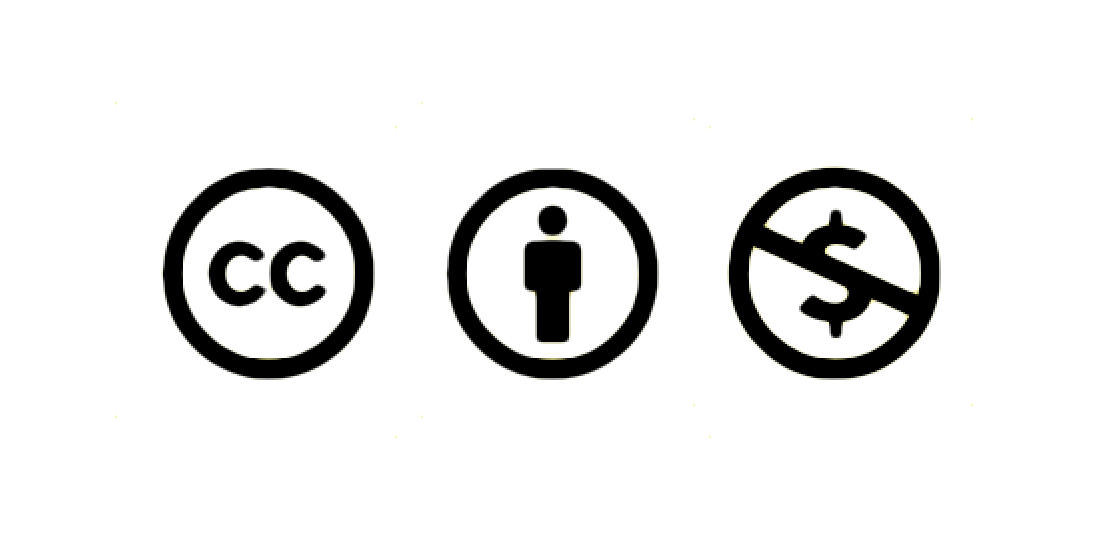
These new additions will help creators list appropriate licensing information in text form, in the same way that © ® and ™ can already be inserted within text, when (if?) they become supported by major vendors.
As these symnbols do not have emoji presentation, they will not appear on emoji keyboards.
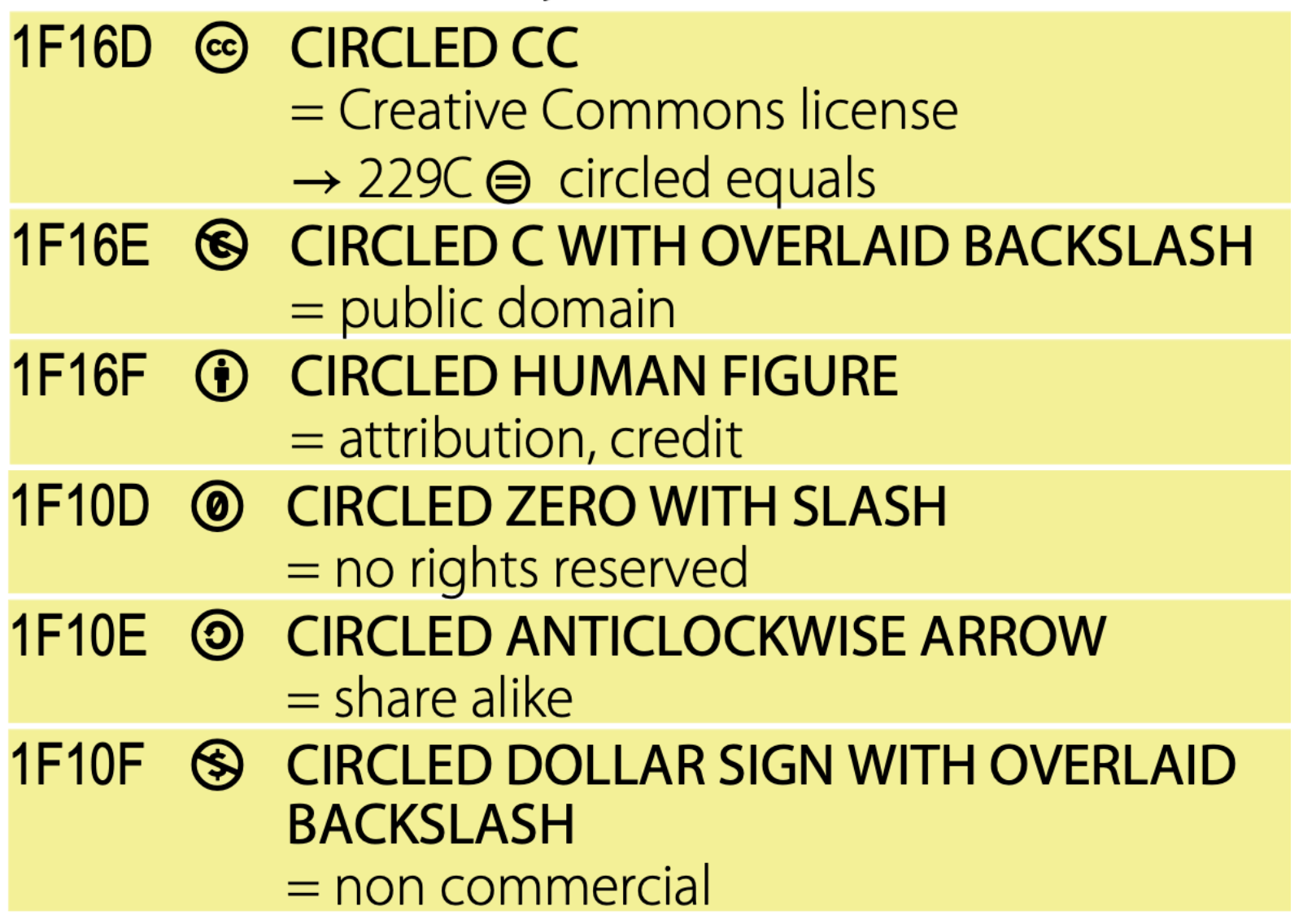
A set of over 200 glyphs used in legacy computers such as the Apple II, Amstrad CPC and Commodore Amiga series have also been added to the Unicode Standard in this release.
These will permit emulators to correctly display text that would have appeared on computers in the 1970s and 1980s, if re-implemented in 2020. Many of these glyphs join in horizontal sequence to create larger shapes or symbols.
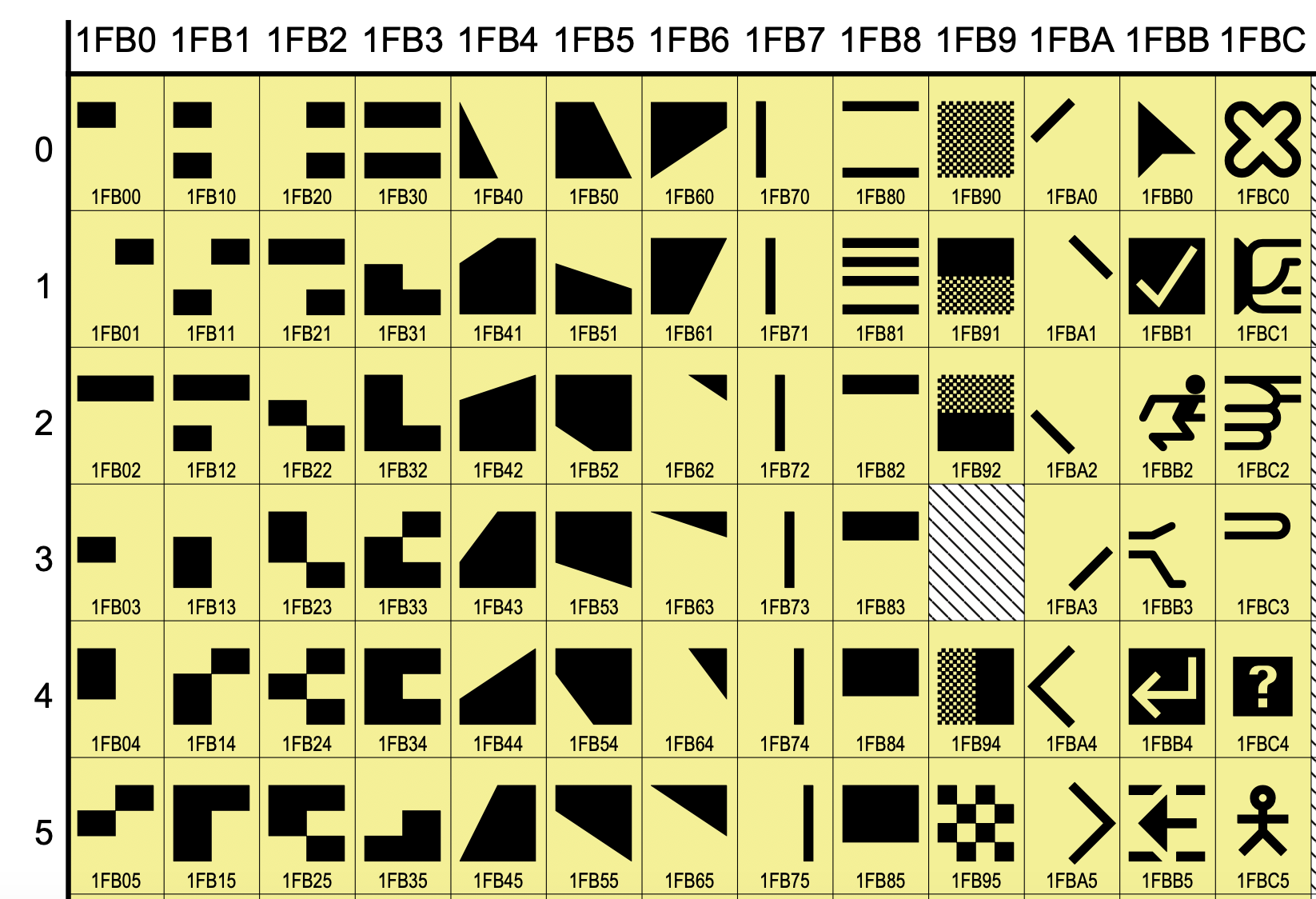
The Unicode Consortium has highlighted the following script and characters additions in this update:
Yezidi, historically used in Iraq and Georgia for liturgical purposes, with some modern revival of usage
Chorasmian, historically used in Central Asia across Uzbekistan, Kazakhstan, and Turkmenistan to write an extinct Eastern Iranian language
Dives Akuru, historically used in the Maldives until the 20th century
Khitan Small Script, historically used in northern China
Arabic script additions used to write Hausa, Wolof, and other languages in Africa, and other additions used to write Hindko and Punjabi in Pakistan
A character fors Syloti Nagri in South Asia
Bopomofo additions used for Cantonese
Browse all the new characters here, with PDFs marking the new additions in yellow.
Emoji Release
The release of Unicode 13.0 does not mean users can access or use any new 2020 emoji.
What today's release from the Unicode Consortium does indicates is when major vendors such as Apple, Google or Samsung can implement these new emojis in their software.
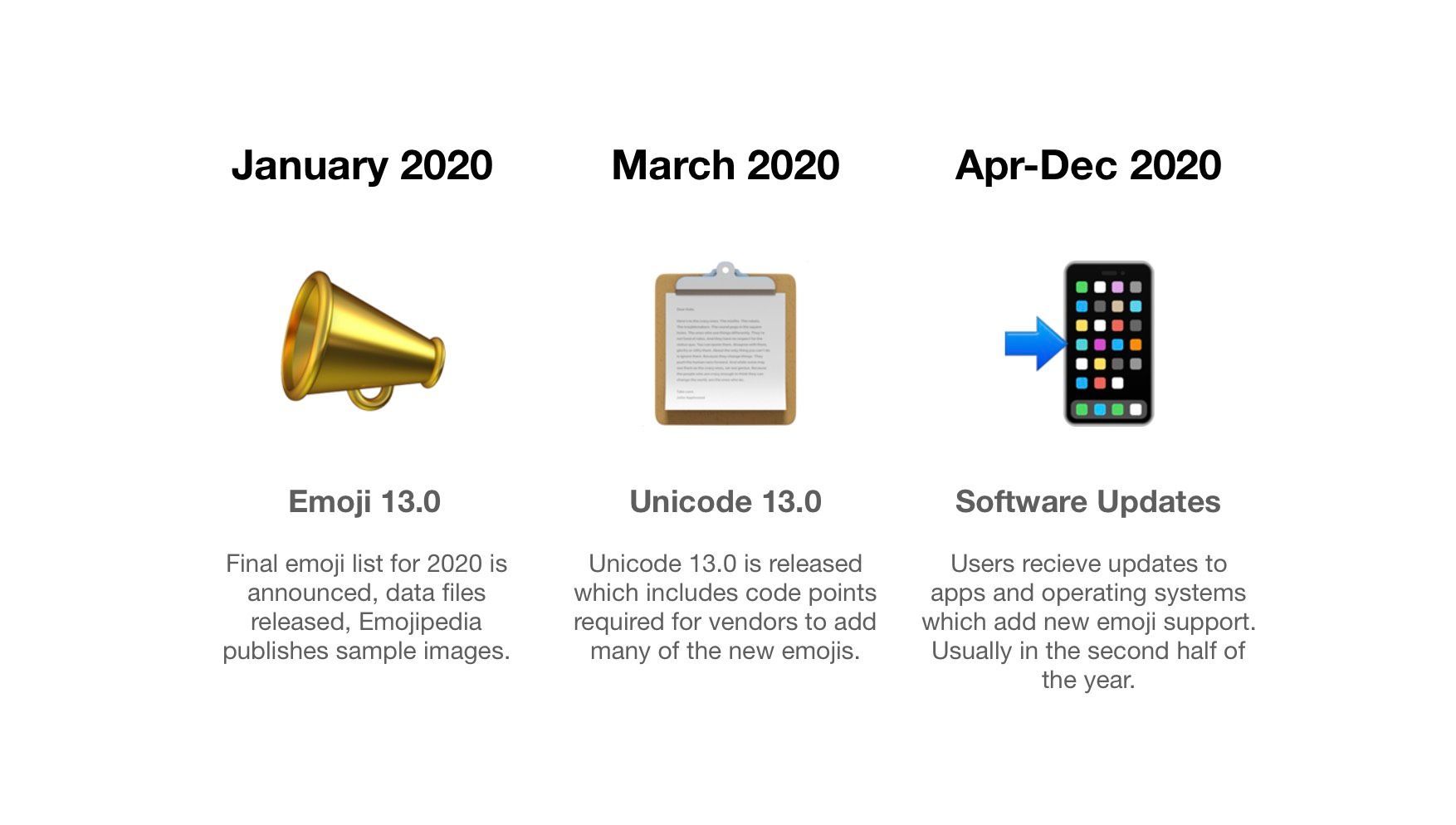
If past years are indication, Twitter may be one of the first major vendors to release new emoji support in the coming months as part of its open source Twemoji project used on the Twitter website and Twitter app for Android.
Google brought new emoji support to Android in September of last year, and Apple to iOS and macOS in October. Given the regular release cycle for major operating systems such as Android and iOS, it's likely this schedule may be seen again in 2020.
Beta or developer previews usually precede operating system updates with new emojis by a few weeks or even months.
📝 Now approved: 117 new emojis for 2020 #Emoji2020 https://t.co/SojQuXZvv6 pic.twitter.com/sHp7GDsSal
— Emojipedia 📙 (@Emojipedia) January 29, 2020
